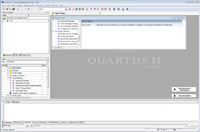8 Bit Baby
 8 Bit Baby by individual Computers is an experimenting board for hobbyists who want to develop hardware on their own. As the name already suggests, the board aims at users of the popular 8 bit computers of the 80s. These computers all have expansion ports that carry all important signals. Unfortunately, most hobbyists do not have the chance to make their own expansions, because experimenting boards normally do not have slot connectors. This problem is now solved with the 8 Bit Baby.
8 Bit Baby by individual Computers is an experimenting board for hobbyists who want to develop hardware on their own. As the name already suggests, the board aims at users of the popular 8 bit computers of the 80s. These computers all have expansion ports that carry all important signals. Unfortunately, most hobbyists do not have the chance to make their own expansions, because experimenting boards normally do not have slot connectors. This problem is now solved with the 8 Bit Baby.
The board has a special connector for a computer on each of the four sides:
for C64: 44-pin, raster 2.54 mm
for VIC-20: 44-pin, raster 3.96 mm
for C16/C116/plus-4: 50-pin, raster 2.0 mm
for Apple II: 50-pin, raster 2.54 mm
The board is prepared for a programmable logic chip by Altera in order to bring hardware development up-to-date. The 8 Bit Baby will be delivered with condensators, resistors and a 3.3 Volts regulator which might not be available in your local electronic store.
This device is no longer available!
Support:
We do not offer any more support for this article.
BIOS/ROM Version: n/a
Manual: n/a
FAQ:
Q: The CPLDs by Atmel and Altera run with 3.3 V. But the user port of the C64 has 5 V.
A: The 8 Bit Baby will be delivered with capacitors, resistors and a 3.3 Volts regulator which might not be available in your local electronic store. The two CPLDs by Atmel and Altera which run on 3.3V both have a 5V tolerance, i. e. the chips only get 3.3V supply voltage, but in case they receive 5V at a logic port, they won't be damaged. Thus, you can use modern 3.3V technology to construct hardware for an ancient 5V computer - without any worries.
Q: How do I check the correct function of the CPLD part?
A: If the provided voltage regulator is soldered, you only have to connect the GND and VCC circuits of the computer (i. e. one of the four bars) to the two points of the 8BB which are labelled accordingly. By doing so, the CPLD gets its 3.3V but can also (as mentioned above) be connected directly to the 5V signals of the host computer. The easiest test for a correct function of the CPLD part is the JTAG access: Just attach the byteblaster and click "auto detect" in the programmer's window and the chip should be identified and indicated. During that process, the power supply of the computer must be turned ON; the byteblaster gets its operating voltage from the 8 Bit Baby (the regulated 3.3V).
The board is prepared for a programmable logic chip (not included in delivery) by Altera or Atmel in order to bring hardware development up-to-date:
Altera EPM3064-xx LC44 (all speed grades)
Altera EPM3032-xx LC44 (all speed grades)
Atmel ATF1504ASV xxJC44 (all speed grades)
Atmel ATF1502ASV xxJC44 (all speed grades)
The Altera EPM3064 can replace many TTL chips with it's 64 macrocells and up to 34 IO pins. TTL chips were used on a regular basis for hardware-expansions in the 80s. The Altera chip can be programmed without expensive programming equipment, you just need a so-called JTAG cable for the parallel port.
Software:
The links to programs/plugins/tools were last reviewed on 01.02.2013
and will not be updated in the future.
Keep in mind: Use at your own risk! We are not responsible for damages caused by the use of programs/demos/tools/plugins listed below. The listed applications have not been developed by Protovision or on its behalf. There is no business relationship between Protovision and the authors. In the case of problems with one of the listed applications contact the respective programmer.
 Quartus II Web Edition by Altera. The development software includes everything you need to design for Altera's low-cost FPGA and CPLD families. For Windows and Windows Linux.
Quartus II Web Edition by Altera. The development software includes everything you need to design for Altera's low-cost FPGA and CPLD families. For Windows and Windows Linux.
More Info: n/a
Download: n/a
© Copyright 2001-2024 PROTOVISION
